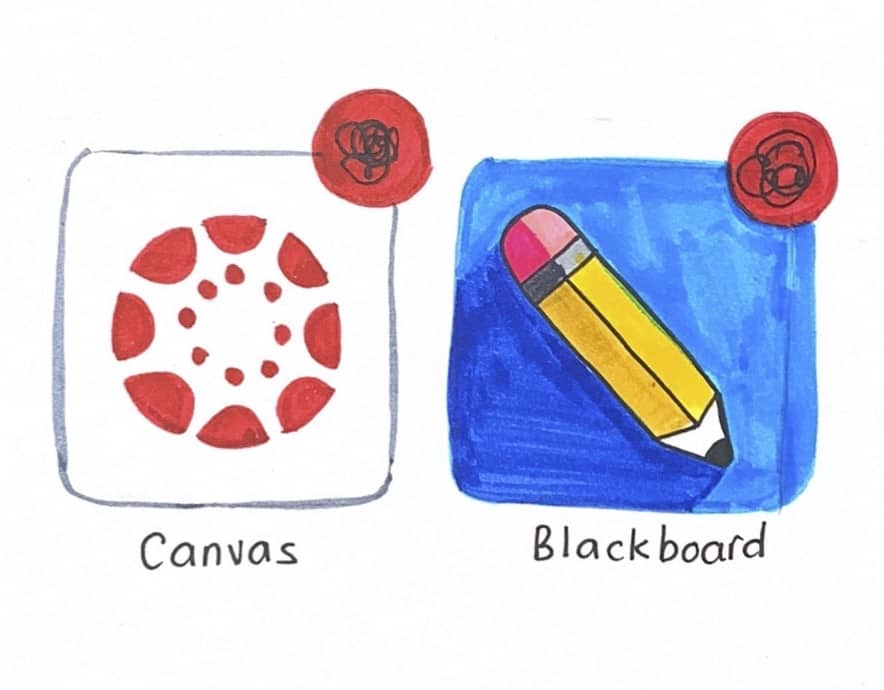
Six months into the COVID-19 pandemic, most of the university’s classrooms remain empty, but the university’s virtual learning landscape is buzzing with activity after the addition of the new learning management system Canvas, from Instructure. But is it worth the hype?
Shelving the tried and true system of the last decade might be a good idea, but the timing and rollout of the platform is a bit questionable. While it might not make much of a difference to first year students –– who would be unfamiliar with either platform –– the rest of us are navigating a new system while simultaneously trying to navigate learning in this virtual world.
Canvas is set to replace Blackboard completely over the next year, with some departments having already transitioned to the new LMS this term. With all of the changes happening in the world, why not one more, right?
Unfortunately this partial commitment to Canvas has led to inconsistencies.
Some instructors are choosing to go full steam ahead with Canvas while others are sticking to the good old Blackboard system. This means that some students may be switching back and forth from one platform to another during the course of their day, making for an ineffective learning strategy.
Canvas is being described as an intuitive system that is more user friendly than its predecessor. While that may be its design, the system is heavily dependent on how the instructor organizes the content. Dumping a semester’s worth of readings unorganized into a miscellaneous folder may give students more headaches than before.
Blackboard was often used like an official Dropbox where profs tossed files for the term. Canvas, however, works best if everything is in its place, organized and subdivided. If it’s used as a file dumping ground it could quickly become a quagmire of information with no real way of finding what you need.
My initial tango with Canvas was not pleasant –– I couldn’t find my readings, I had trouble downloading a syllabus and I didn’t necessarily like how it wants you to stay on the platform at all times.
I like to download my content off of PAWS and organize it offline. I have a specific way of structuring my learning, using different apps like Noteshelf. Canvas, however, wants you to engage with the system in a cohesive and immersive way, which may work for some, but it’s a bit of a learning curve for people that have particular ways of studying.
While Blackboard was more of a file-sharing system, Canvas is designed as a virtual platform. Blackboard allows you to download your work and go about your day until you have to come back and submit an assignment or two. Canvas wants to put on a pot of coffee, make you a sandwich and host you for your entire day of learning.
After my initial frustrations subsided, I downloaded the Canvas app to my devices and began to explore. I will say that after giving it some time the system’s immersive design is a positive for the online learning environment. Recorded lectures are easy to navigate and the MEETS plugin gives you an overview and the link of your WebEx meeting time.
While I started out wanting to tear the system apart at the beginning of the week, I may have ended up being a Canvas convert by the end of it. However, while it’s an improvement from Blackboard, Canvas is not the holy grail of learning management platforms. The university is choosing it as a mediocre but inexpensive alternative to building a LMS from scratch.
While this makes sense right now, this system is now basically functioning as the university’s facilities — for students, it is the classroom, the labs and the study rooms. It makes sense to invest in these systems like you would invest in a physical learning space. Canvas is less tailored to the specific needs of University of Saskatchewan students, but effective for the time being.
If higher education has been transformed by the pandemic, then learning technology must follow suit. Developing individual institutional platforms, while costly, might be the best way for universities to better support their students to thrive in this brave new world.
—
Erin Matthews | Communications Director
Graphic: Anh Phan | Design Editor